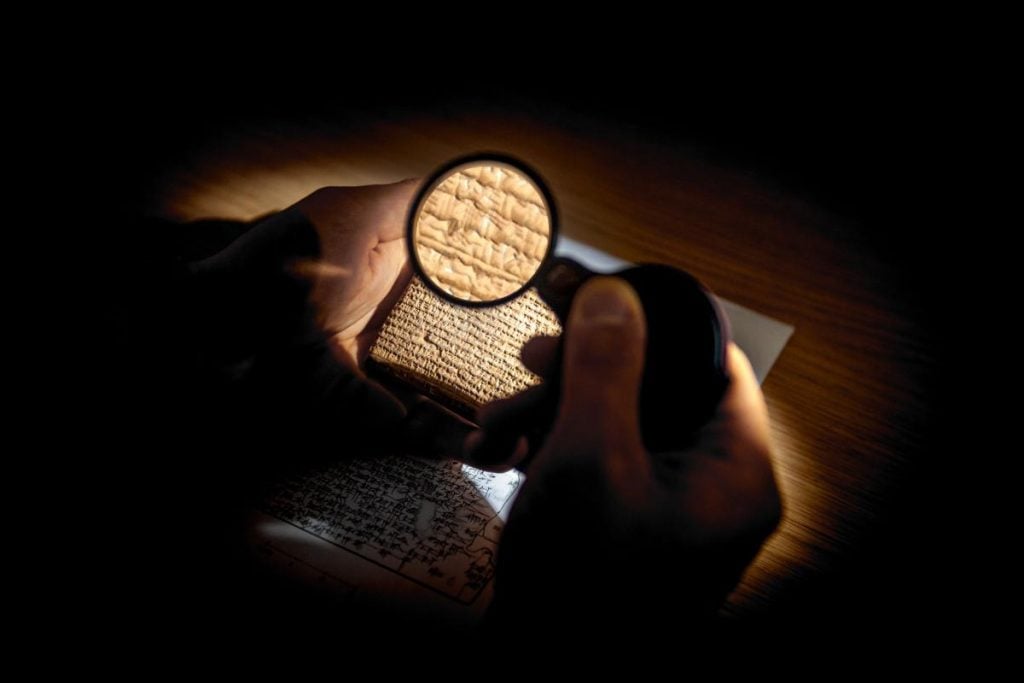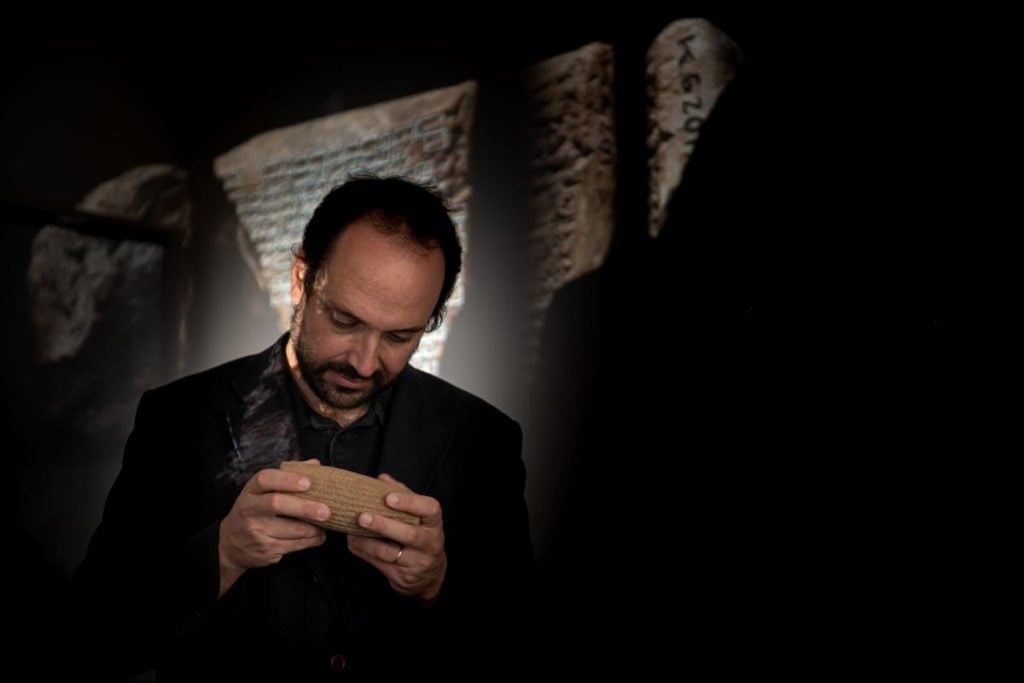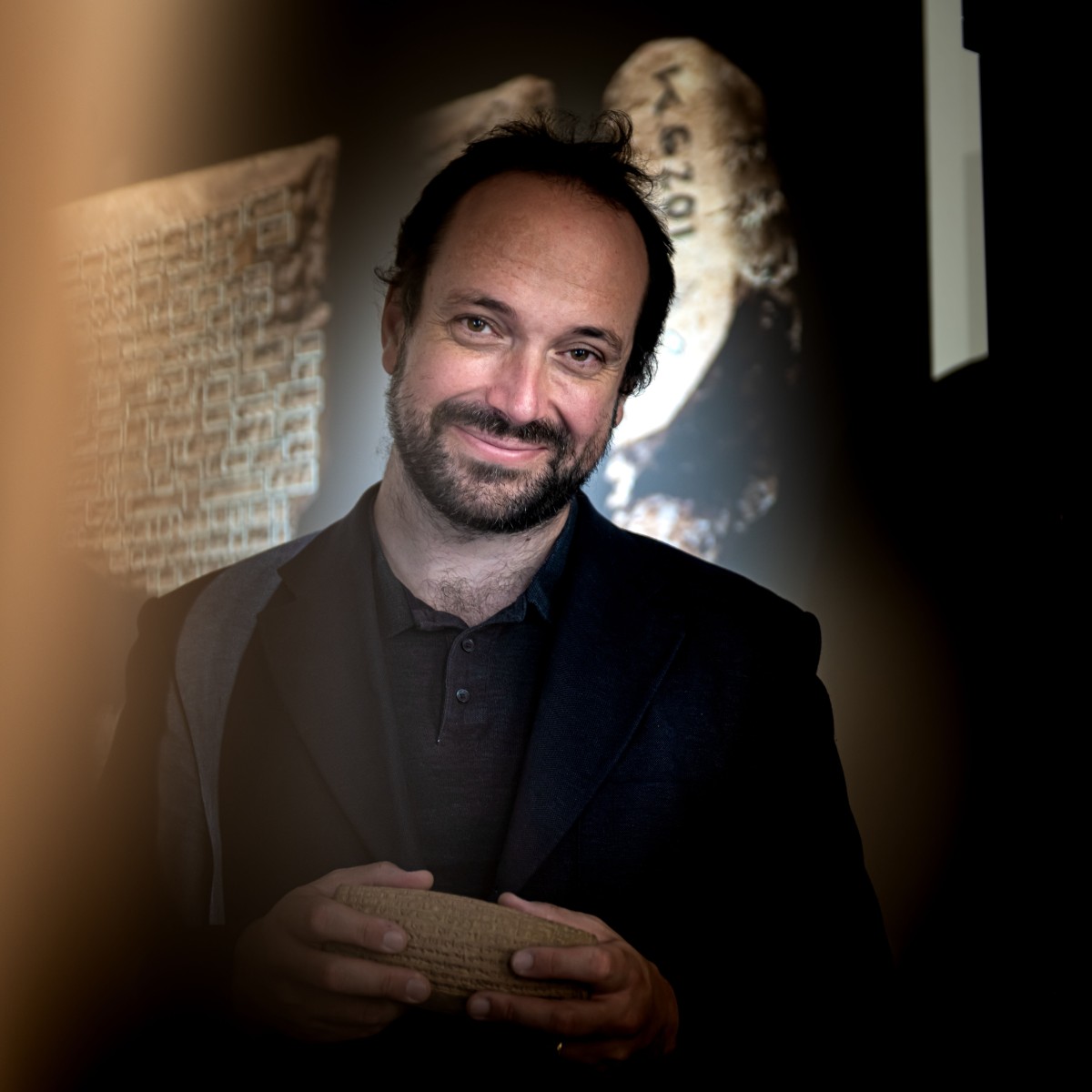The Epic of Gilgamesh: It’s a story about 4,000 years old, handed down only in an extinct writing system with cuneiform letters on clay tablet fragments. And now, thanks to the power of AI cuneiform translation, scientists are deciphering previously unknown parts of the story.
The project is called “Fragmentarium” and runs on an algorithm developed by a team at the Institute of Assyriology at Ludwig Maximilian University in Munich.
“It is a tool that did not exist before, a huge database of fragments. We believe it can play a crucial role in reconstructing Babylonian literature and will allow us to make much faster progress,” Enrique Jiménez, professor at the Institute of Assyriology, told science news channel Phys.
For thousands of years, the cuneiform writing on clay tablets from the Babylonian period remained an indecipherable mystery. It was not until 1872 that a British Museum employee named George Smith became the first modern scientist to read the Epic of Gilgamesh. Just four years later, he died at the age of 36 while traveling to the Middle East in search of further parts of the lost poem.

A fragment of a clay tablet with cuneiform text. Photo courtesy of the Ludwig Maximilian University of Munich.
Scholars have been following Smith’s trail for over 150 years, and the story is coming together bit by bit as archaeologists uncover new cuneiform texts during excavations, museum staff rediscover dusty fragments from storage rooms, and authorities confiscated looted artifacts.
But in recent years, AI has given their efforts a huge boost. The Fragmentarium can translate these ancient texts from the Sumerian and Akkadian originals much faster than a human Assyriologist.
This can not only help identify missing sections of the poem, but also translate all kinds of ancient Babylonian writing. Some of these surviving texts may seem mundane, but even purchase invoices and other everyday records can help expand our understanding of this ancient civilization.
Since 2018, Fragmentarium has been comparing lines from the epic with texts from 1,500 tablet fragments. Before AI took over this task, scientists had only succeeded in doing so with about 5,000 pieces.
“The traditional method relies on the researchers’ good memory and, of course, on chance,” Jiménez said in a statement. “The modern, AI-based reconstruction method, on the other hand, relies on researchers’ databases that collect thousands of characters. With the help of artificial intelligence, all known variants of a Babylonian text can be quickly analyzed and used accordingly.”
This is not the first time AI has helped decipher ancient manuscripts. A team from Tel Aviv and Ariel Universities in Israel unveiled a similar project in 2023 looking at Mesopotamian cuneiform writing. And an AI system from researchers at the University of Kentucky is helping decipher text on a cache of scrolls burned during the eruption of Vesuvius.

Enrique Jiménez, Professor at the Institute of Assyriology. Photo courtesy of Ludwig Maximilian University of Munich, Germany.
The Fragmentarium has collaborated with institutions such as the British Museum and the Iraq Museum in Baghdad to include their cuneiform collections in the database. In 2023, when the Fragmentarium opened to the public, more than 22,000 fragments had been digitized.
The epic tells the story of the eponymous demigod Gilgamesh, the king of Urdu, and his friend Enkidu, the wild man. The two kill the guardian of the forest, the monster Humbaba, and the gods take revenge by killing Enkidu. In his grief, Gilgamesh sets out to find his ancestor Utnapishtim, who survived a flood of biblical proportions, in the hope of learning the secret of immortality.
Thanks to the Fragmentarium, we now know several new scenes from the story. There are newly discovered lines in which Enkidu tries to convince Gilgamesh not to kill Humbaba. And after they succeed in doing so, the duo travel to the god Enlil in the city of Nippur.
The Fragmentarium has also identified a much more recent tablet containing part of the Epic of Gilgamesh. The tablet dates from 130 BC, showing that the poem was still being copied and circulated thousands of years after its first known appearance.
Some of the newly translated texts offer subtle but fascinating variations on the previously known story. For example, when Utnapishtim recounted his preparations for the flood, he told Gilgamesh that he had “poured” food and drink on the men who had built the ark.
“We didn’t have the word ‘lavish’ before,” said Benjamin R. Foster, a professor of Assyriology and Gilgamesh translator at Yale University who worked on the project, New York Times“And in my opinion he feels guilty because he knows that all the people who are helping him build the ark will drown in a few days.”
An estimated 30 percent of the poem is still missing, and experts are still trying to find out more about the story and Mesopotamian writing in general. AI now appears to be playing an important role in this endeavor.
“Anyone will be able to play with the fragmentarium,” Jiménez said in a statement. “There are thousands of fragments that have not yet been identified.”
Follow Artnet News on Facebook:
Want to stay up to date in the art world? Subscribe to our newsletter and receive breaking news, insightful interviews and astute critical views that drive the discussion forward.

